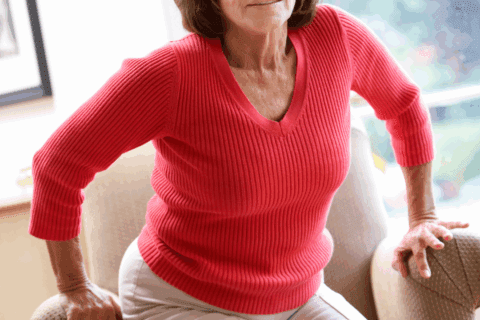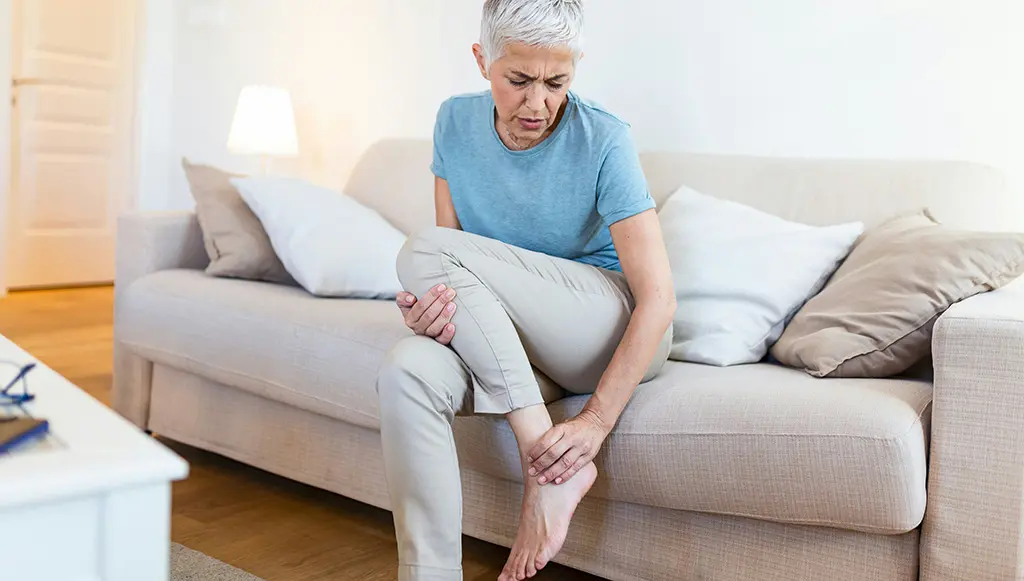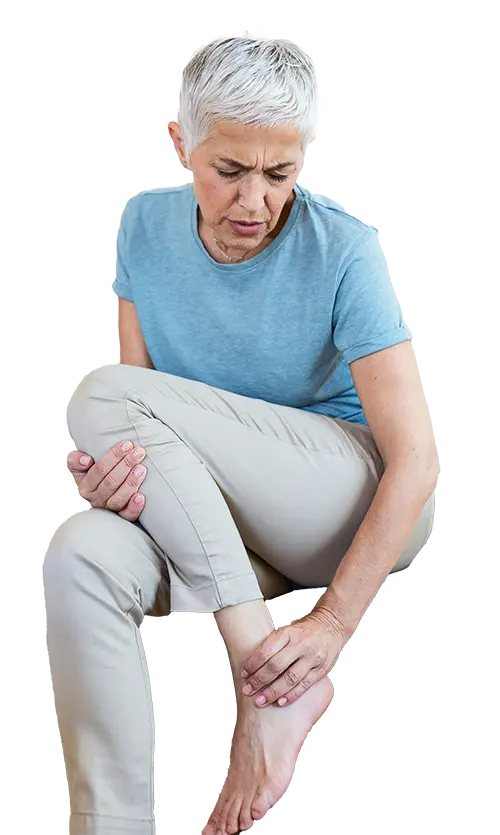 Knee arthritis is a common condition that affects millions of people worldwide, causing pain, stiffness, and reduced mobility in the knee joint. This chronic condition can significantly impact daily activities and quality of life.
Knee arthritis is a common condition that affects millions of people worldwide, causing pain, stiffness, and reduced mobility in the knee joint. This chronic condition can significantly impact daily activities and quality of life.
Living with knee arthritis can present challenges, from discomfort and stiffness to limitations in mobility. However, with proactive management strategies, people may effectively reduce symptoms and improve their quality of life.
In this article, we’ll explore the symptoms, causes, and treatment options for knee arthritis, as well as practical tips for managing knee pain:
Symptoms of Knee Arthritis
Knee arthritis typically has these following symptoms:
- Pain: Persistent pain in and around the knee joint, especially during movement or weight-bearing activities.
- Stiffness: Difficulty bending or straightening the knee, particularly after periods of inactivity or prolonged sitting.
- Swelling: Inflammation and swelling around the knee joint, often accompanied by warmth and tenderness.
- Limited Range of Motion: Reduced flexibility and range of motion in the knee joint, making it challenging to perform certain movements.
- Joint Deformity: Over time, knee arthritis may lead to joint deformity, such as bone spurs or visible changes in the shape of the knee. You may even find changes in the way you walk due to the pain, which can lead to pain in other joints such as the ankle and feet.
Causes of Knee Arthritis
Several factors can contribute to the development of knee arthritis including:
- Age: The risk of knee arthritis increases with age, as wear and tear on the joint over time can lead to cartilage degeneration.
- Obesity: Excess weight places added stress on the knee joint, which can increase the rate of cartilage breakdown and the risk of arthritis.
- Joint Injury: Previous knee injuries, such as fractures or ligament tears, may predispose people to develop arthritis later in life.
- Genetics: Family history and genetics may play a role in the development of knee arthritis, with certain genetic factors influencing cartilage health and joint function.
- Lifestyle factors: Factors such as occupation, heavy contact sports participation, and repetitive stress on the knee joint can contribute to the onset of arthritis.
Practical Tips for Managing Knee Arthritis:
#1. Stay Active
While it may seem counterintuitive, regular physical activity is important for maintaining joint function and reducing stiffness. Low-impact exercises such as walking, swimming, and cycling can help strengthen the muscles around the knee joint and improve flexibility.
For more information, read our article on Walking and Arthritis.
#2. Maintain a Healthy Weight
Excess weight puts added stress on the knee joints, worsening arthritis symptoms. By maintaining a healthy weight through a balanced diet and regular exercise, it can reduce pressure on the knee joints and reduce discomfort.
For more information, read our article on Weight and Arthritis.
#3. Use Assistive Devices
Assistive devices such as canes, braces, or orthotic shoe inserts can provide additional support and stability to the knee joint, reducing strain and discomfort during daily activities.
For more information, read our article on Assistive Devices for Arthritis.
#4. Practice Joint Protection
Implementing joint protection techniques can help minimise stress on the knee joints. This includes avoiding repetitive movements that worsen symptoms, using proper body mechanics when lifting or bending, and pacing activities to prevent overexertion.
For more information, read our article on The Power of Pacing for Arthritis Management.
#5. Apply Hot or Cold Therapy
Alternating between hot and cold therapy can help reduce pain and inflammation associated with knee arthritis. Applying a heating pad or warm compress can soothe stiff joints, while cold packs can help reduce swelling and discomfort.
For more information, read our article on Hot and Cold Therapies.
#6. Try Low-Impact Exercises
Engaging in low-impact exercises such as yoga, tai chi, or Pilates can improve joint flexibility, balance, and strength without putting undue strain on the knees.
For more information, read our article on Tips for Warming Up and Stretching.
#7. Consider Physical Therapy
Working with a physical therapist, such as an exercise physiologist or physiotherapist, can provide personalised exercise programs and techniques to improve knee function, reduce pain, and improve mobility.
For more information, read our article on How an Exercise Physiologist Can Help You.
#8. Manage Stress
Stress can worsen arthritis symptoms by triggering inflammation and tension in the body. Incorporating stress-reducing activities such as mindfulness meditation, deep breathing exercises, or hobbies may help reduce symptoms and improve overall wellbeing.
For more information, read our article on Mindfulness and Arthritis.
#9. Optimise Sleep
Quality sleep is important for managing arthritis symptoms and promoting overall health. Creating a relaxing bedtime routine, maintaining a comfortable sleep environment, and practicing good sleep hygiene may help people with knee arthritis get the rest they need.
For more information, read our article on Sleep Hygiene and Arthritis.
#10. Stay Informed and Seek Support
Educating oneself about knee arthritis and available treatment options can empower people to make informed decisions about their health. Seeking support from healthcare professionals, support groups, or loved ones can provide valuable encouragement and guidance along the journey of managing knee arthritis.
For more information, read our article on Support for Mental Wellbeing.
Knee arthritis is a chronic condition that can significantly impact daily life, but with proper management and treatment, people can effectively reduce symptoms and improve joint function.
By understanding the symptoms, causes, and treatment options for knee arthritis, people can take proactive steps to manage their condition and maintain a better quality of life despite living with arthritis in the knee joint.
February 2024







